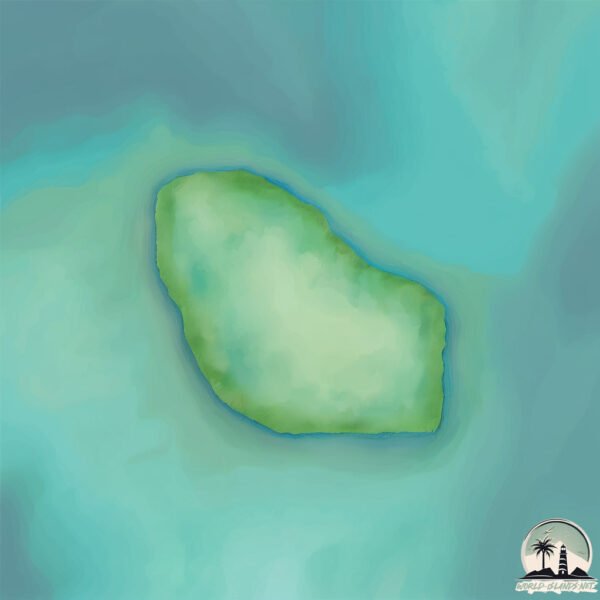Lito Limboku Daa

Welcome to Lito Limboku Daa, a Tropical island in the Gulf of Tomini, part of the majestic Pacific Ocean. This guide offers a comprehensive overview of what makes Lito Limboku Daa unique – from its geography and climate to its population, infrastructure, and beyond. Dive into the details:
- Geography and Size: Explore the island’s size and location.
- Climate and Weather: Weather patterns and temperature.
- Topography and Nature: Uncover the natural wonders of the island.
- Infrastructure and Travelling: Insights on reaching, staying, and making the most of your visit.
- News and Headlines: Latest News.
Geography and size of Lito Limboku Daa
Size: 0.187 km²
Coastline: 1.7 km
Ocean: Pacific Ocean
Sea: Gulf of Tomini
Continent: Asia
Lito Limboku Daa is a Tiny Island spanning 0.187 km² with a coastline of 1.7 km.
Archipel: Greater Sunda Islands – A group of large islands in Southeast Asia, including Borneo, Sumatra, Java, and Sulawesi, known for their rich biodiversity and cultural diversity.
Tectonic Plate: Molucca Sea – A small tectonic plate in the Molucca Sea in Indonesia, characterized by complex interactions with the surrounding Pacific, Eurasian, and Australian plates. Known for seismic activity and the formation of volcanic arcs.
The geographic heart of the island is pinpointed at these coordinates:
Latitude: 0.51404203 / Longitude: 121.61905962
Climate and weather of Lito Limboku Daa
Climate Zone: Tropical
Climate Details: Tropical Rainforest Climate
Temperature: Hot
Climate Characteristics: This climate is typified by heavy rainfall throughout the year, high humidity, and consistently high temperatures, leading to lush rainforests and rich biodiversity. Seasonal temperature variations are minimal.
Topography and nature of Lito Limboku Daa
Timezone: UTC+08:00
Timezone places: Australia/Perth
Max. Elevation: -18 m
Mean Elevation: -18 m
Vegetation: Evergreen Broadleaf Forest
Tree Coverage: 64%
The mean elevation is -18 m. Remarkably, this unique island barely emerges above the sea level, showcasing nature’s fascinating interplay with the ocean. The island is characterized by Plains: Flat, low-lying lands characterized by a maximum elevation of up to 200 meters. On islands, plains are typically coastal lowlands or central flat areas.
Dominating Vegetation: Evergreen Broadleaf Forest
Characterized by dense, lush canopies of broadleaf trees that retain their leaves year-round. These forests are typically found in tropical and subtropical regions and are known for their high biodiversity. Lito Limboku Daa has a tree cover of 64 %.
Vegetation: 1 vegetation zones – Minimal Diversity Island
These islands exhibit the most basic level of ecological diversity, often characterized by a single dominant vegetation type. This could be due to extreme environmental conditions, limited land area, or significant human impact. They represent unique ecosystems where specific species have adapted to thrive in these singular environments.
Infrastructure and Travelling to Lito Limboku Daa
Does the island have a public airport? no.
There is no public and scheduled airport on Lito Limboku Daa. The nearest airport is Buol Airport, located 69 km away.
Does the island have a major port? no.
There are no major ports on Lito Limboku Daa. The closest major port is GORONTALO, approximately 159 km away.
The mean population of Lito Limboku Daa is 36 per km². Lito Limboku Daa is Gently Populated. The island belongs to Indonesia.
Continuing your journey, Pulau Unauna is the next notable island, situated merely km away.
Indonesia is classified as Emerging region: MIKT: Mexico, Indonesia, South Korea, and Turkey – Economies recognized for their development potential and emerging market status. The level of income is Lower middle income.
News – Latest Updates and Headlines from Lito Limboku Daa
Stay informed with the most recent news and important headlines from Lito Limboku Daa. Here’s a roundup of the latest developments.
Please note: The data used here has been primarily extracted from satellite readings. Deviations from exact values may occur, particularly regarding the height of elevations and population density. Land area and coastline measurements refer to average values at mean high tide.
